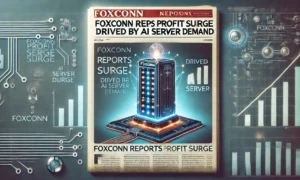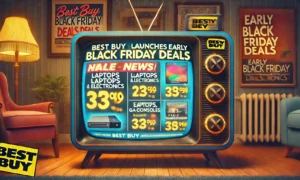In the competitive world of e-commerce, few companies have garnered as much attention as Zepto in recent months. The startup, which specializes in delivering groceries and daily essentials within minutes, has become a poster child for the rapidly expanding quick-commerce sector in India. While the company’s impressive revenue growth has caught the eye of investors and industry analysts alike, its journey has not been without challenges. Zepto has been working to offset its operational losses by improving margins, a strategy that’s beginning to bear fruit.
Founded in 2021 by two former Stanford University students, Aadit Palicha and Kaivalya Vohra, Zepto’s goal was simple yet ambitious: to disrupt the traditional grocery delivery model by offering hyperlocal, instant delivery services. Operating in a sector that is often plagued by logistical hurdles, competition, and razor-thin profit margins, Zepto’s approach to fast, efficient deliveries has managed to carve out a significant market niche in one of the world’s largest consumer markets.
As the company continues to scale, its financials have evolved, revealing a mix of strong revenue growth paired with a consistent focus on reducing losses through better operational efficiencies and improved margins. This article delves into Zepto’s path to profitability, the strategies it has deployed to optimize its business model, and the market trends that have fueled its rapid rise in the e-commerce space. We will also explore how Zepto is positioning itself as a leader in the quick-commerce and hyperlocal delivery markets, balancing growth and cost control.
Zepto’s Rocket-Fueled Revenue Growth: Capitalizing on the E-Commerce Boom
Since its inception, Zepto has witnessed a meteoric rise, thanks in large part to the increasing demand for on-demand delivery services, particularly in urban areas. India, with its vast population, expanding internet penetration, and growing middle class, represents one of the most lucrative markets for e-commerce businesses. Zepto, which operates in more than 10 major cities, has strategically tapped into this demand, particularly within the grocery segment.
Zepto’s core business revolves around providing customers with the ability to order groceries and essentials through its mobile app, with delivery promises of as little as 10 minutes in major urban areas. The company’s quick-commerce model has resonated with time-starved consumers looking for faster alternatives to traditional grocery shopping, and it has benefited from the rise in digital adoption during the pandemic.
Despite its initial focus on speed, Zepto has also managed to capitalize on strong revenue growth by expanding its product range and improving its inventory management. For example, in the last fiscal quarter, Zepto reported a 50% increase in its monthly active users and a 35% growth in overall revenue, driven by higher transaction volumes and a larger customer base. By offering an ever-expanding catalog of products, from fresh produce to ready-to-eat meals, Zepto has positioned itself as a one-stop shop for all essential household items.
Zepto’s revenue growth has also been fueled by strategic partnerships with major suppliers and brand collaborations, enhancing its product offerings and allowing the company to secure competitive pricing, which it can pass on to customers. With more customers relying on Zepto for everyday essentials, the company has built up a loyal customer base, resulting in higher repeat purchase rates and greater lifetime value.
The Rapid Expansion of Zepto’s Operations
A key driver of Zepto’s revenue growth has been its expansion into new cities and regions. While initially focusing on Mumbai and Bengaluru, Zepto has rapidly expanded to cities like Delhi, Hyderabad, Pune, and Chennai. Each new city offers a unique set of logistical challenges, but Zepto’s ability to set up micro-fulfillment centers (MFCs) strategically located in high-density areas has allowed it to maintain its promise of rapid delivery while minimizing overhead costs.
By establishing these MFCs close to consumers, Zepto minimizes delivery times and maximizes operational efficiency. The company has significantly improved its supply chain capabilities, optimizing the last-mile delivery process to ensure that orders are completed swiftly and cost-effectively. The more localized the fulfillment process, the more the company can cut down on transportation costs and reduce the carbon footprint of its deliveries.
In addition to expanding its geographical footprint, Zepto has also diversified its product categories. Initially, it focused predominantly on groceries and fresh produce, but it has since added personal care items, home essentials, beverages, snacks, and even pet care products to its range. This broader product selection has allowed the company to tap into a larger consumer segment, driving both growth and increased average order value.
Balancing Revenue Growth with Profitability: Zepto’s Strategy to Improve Margins
While Zepto has enjoyed significant revenue growth, the company has not been immune to the challenges of running a high-volume, low-margin business. The quick-commerce model is notoriously difficult to profit from due to the intense pressure on delivery costs, inventory management, and supply chain logistics.
In its early days, Zepto, like many hyperlocal delivery startups, operated at a loss as it aggressively expanded its user base and built out its infrastructure. But now, with a maturing business model, the company is starting to see improved margins as it refines its operations and scales more efficiently.
Improved Operational Efficiencies
Zepto’s focus on cost optimization and supply chain efficiency has been pivotal in improving its margins. One of the major ways the company has achieved this is by investing in technology to streamline its order fulfillment process. Through machine learning algorithms and data analytics, Zepto is able to forecast demand more accurately, ensuring that products are stocked in the right quantities and reducing the risk of excess inventory, which can drive up storage and wastage costs.
Moreover, Zepto has embraced automation in its fulfillment centers. By using automated sorting and picking systems, the company has reduced labor costs and improved the speed of order processing. This not only lowers operating expenses but also allows Zepto to manage larger volumes of orders without a proportional increase in staffing or operational costs.
Another key initiative to improve margins has been Zepto’s partnering with third-party delivery networks. By outsourcing the delivery process to local delivery agents, Zepto has been able to reduce the overhead costs associated with running its own delivery fleet. This allows the company to scale more effectively while controlling the cost of logistics, which remains one of the most significant expense categories for quick-commerce businesses.
Strategic Pricing and Customer Loyalty
Zepto has also focused on improving its pricing strategy to enhance margins without sacrificing customer acquisition. Through strategic pricing tiers and offering discounts for repeat customers, Zepto has incentivized customer loyalty while ensuring that prices remain competitive in the crowded grocery delivery market. Moreover, it has developed personalized marketing campaigns using consumer data, targeting customers with tailored offers that increase the likelihood of repeat purchases.
Zepto’s approach to loyalty programs and subscription models has proven effective in retaining high-value customers. With initiatives like Zepto Plus, which offers free deliveries for a nominal monthly fee, Zepto has encouraged customers to make more frequent purchases while ensuring a steady revenue stream.
The Role of Funding in Scaling and Improving Margins
Zepto’s ability to secure funding from venture capital firms has played a crucial role in its ability to scale rapidly and invest in its infrastructure. In the past year alone, Zepto raised significant capital in Series B funding, bringing its total valuation to approximately $1.4 billion. These funds have enabled the company to invest heavily in technology, warehouse expansion, and customer acquisition.
The influx of capital has also helped Zepto maintain its focus on long-term profitability rather than short-term losses, giving it the flexibility to reinvest in the business while optimizing its cost structure. As the company continues to scale and increase its market share, the hope is that these investments will eventually lead to positive cash flow and, ultimately, profitability.
Looking Ahead: The Future of Zepto and Quick-Commerce
Zepto is well-positioned for continued growth, but the company must navigate several key challenges as it matures. One of the most significant challenges will be maintaining customer acquisition while avoiding the high costs associated with marketing and promotions. As competition in the quick-commerce space heats up, with rival companies like Blinkit and Dunzo also vying for market share, Zepto will need to maintain its focus on customer retention, operational efficiency, and differentiation.
The ongoing expansion into new cities and product categories, as well as continued investment in supply chain optimization, will be critical to maintaining Zepto’s momentum. Additionally, it will be essential for the company to innovate by incorporating emerging technologies, such as AI-driven delivery predictions and advanced inventory management systems, to stay ahead of the curve in a crowded and fast-moving market.
As Zepto continues to grow and mature, its ability to balance top-line revenue growth with profitability will be the key to sustaining its success. With a laser focus on improving margins and enhancing the customer experience, Zepto is poised to remain a leader in the quick-commerce revolution.
Table 1: Key Metrics of Zepto (2024)
| Metric | Value |
|---|---|
| Revenue Growth (YoY) | 35% increase |
| Monthly Active Users | 50 million+ |
| Cities Operated In | 10+ major cities |
| Valuation | $1.4 billion |
| Products Offered | 500+ (Groceries, Essentials, etc.) |
| Funding Raised (Series B) | $200 million+ |


